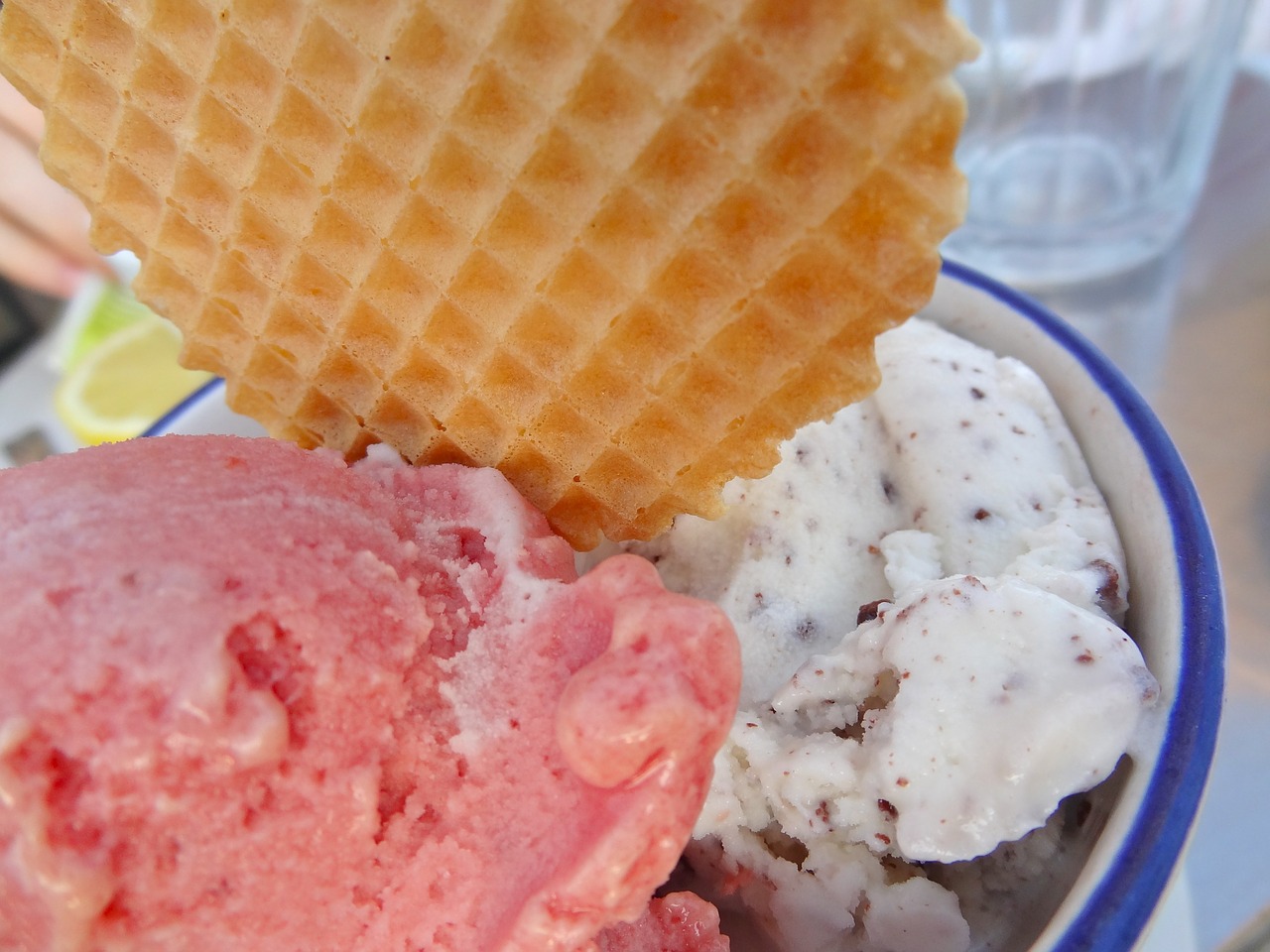When I first had the idea for the “Difference Between” category, I knew that it would sometimes inevitably spill into more than just two things.
Today’s Difference Between is with ice cream and gelato, which of course brings into the discussion frozen yogurt, custard, sherbet, and sorbet.
Thank you to SeriousEats.com, ItalyInSF.com, MyRecipes.com, DivineCaroline.com, and PapaLeniGelato.com for the following information.
SeriousEats.com broke it down the best (I love that website): the difference between ice cream and gelato is dependent upon three factors – air, fat, and serving temperature.
First, the air. When ice cream freezes it forms crunchy ice crystals – the end game is to get the crystals as small as possible. The more air there is in a frozen dessert, the more of a risk there is of the ice crystals getting larger and more detectable.
Gelato is more dense and therefore less “airy” than ice cream is; less air is churned in during the freezing process. Air trapped in the final product is about 25% to 30% with gelato, and 50% or even more with ice cream.
Next, the fat. Gelato is less fattening because it uses more milk than cream. The FDA maintains that ice cream sold in the US must be at least 10% butterfat; gelato is only 3% to 8% butterfat. Many maintain that because gelato is less fattening, the true flavor is able to come through more than with ice cream.
Finally, temperature served. Ice cream is served frozen, and gelato is served semi-frozen, not unlike soft serve ice cream.
Gelato has been said to mean “frozen” and “ice cream” in Italian, and both are essentially correct from what I can tell. The standards for what actually constitutes ice cream is different in the US than it is in Italy, so essentially gelato is ice cream in Italy, but not here.
To recap: ice cream is less dense and more fattening than gelato, and is typically served in a more frozen state.
As for our other frozen desserts – frozen yogurt is soft ice cream with yogurt as the main base. Custard is essentially ice cream with egg yolk – the FDA mandates that a frozen dessert composed of 1.4% or more egg yolk must be classified as a custard.
Sherbert is fruit based and contains less dairy than ice cream, gelato, and frozen yogurt. Sorbet is also fruit flavored, but typically does not contain any dairy at all; sorbet is also more likely to contain liquor in some form.
